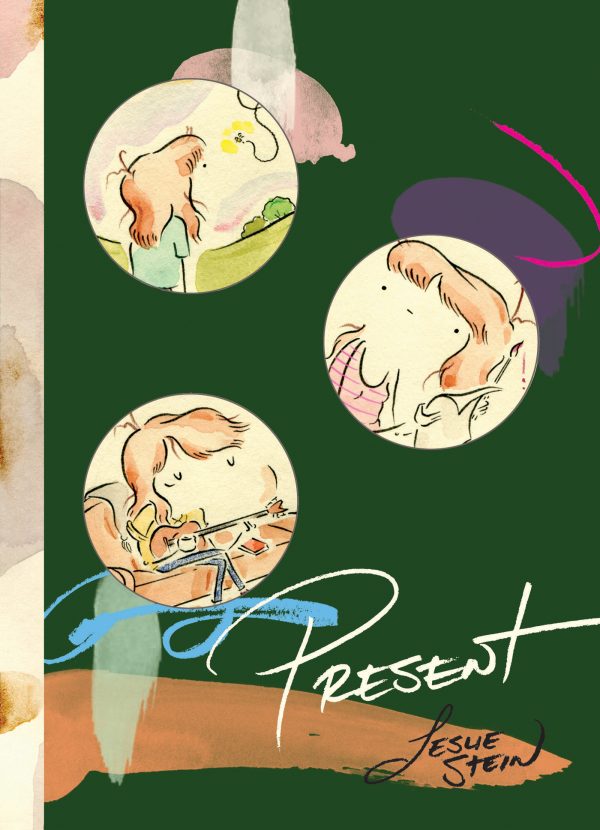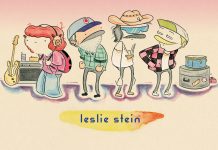Near the end of Present, Leslie Stein tells a short tale about a particular long term customer of hers who goes into restaurants, orders a Merlot, and then offers little else. Stein is patient and curious, asks around about the guy, and eventually gets her chance to interact. She looks at the chance — or at least the knowledge gleaned from the chance — as an important key to further doors with this guy. The first interaction is a prompt to the ones that follow. Stein sees this a victory in life, and this is why Stein is a good cartoonist — she sees the communication between her and her audience as the important part, not just her talking about herself. She seeks common ground.
In the introduction to the book, Stein talks about something she did as a kid to make cleaning her room more bearable, but likens it to the wider effort in her life to deal with sadness — nothing in particular, just the sadness that is there. She talks in terms of flicking a switch in her brain that changes what she is facing. With comics, she talks about switching from “challenge” to “gift” — that is, changing the viewpoint from looking at the daunting task of creating a comic to the warm one of creating a gift for someone else. As it happens, Stein’s comics do read a lot like a gift, like that gift is an expression of something that is happening with her or something she is feeling, and it is presented with the idea that you, too, might be going through the same thing.
Stein’s narratives are short and qualify as slices of life, though they could just as easily qualify as single thoughts brought to conclusion. They cover small incidents like feeling guilty about not going home for Christmas, or trips to the museum to get away from her own art, or just an encounter with a particularly profound fortune cookie that ties everything together for her.
Stein is mostly a lone figure in her comics, which isn’t to say that other people don’t appear, but is to say that they come from the point of view of her, as a stylized figure, navigating the world. Other people might be next to Stein, but they never interfere with her or crowd her out. She is our the reader’s avatar, after all. And yet that doesn’t mean that she hogs the narrative. Not true at all. Stein listens, so we listen. But Stein helps us tie it all together, and in doing so, sometimes she comes off as alone in a crowded comic book.
Her drawing style has become such that faces are abstracted — technically they’re not even completed — but it creates a faceless persona that invites any of us to place our own faces in that blank space and, along with that, our own experience and emotions. Ours might not be a mirror to Stein’s, but the room is there to inhabit hers if not, and if we do have some commonality, all the better.








